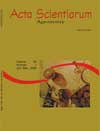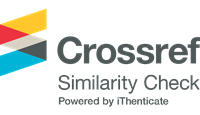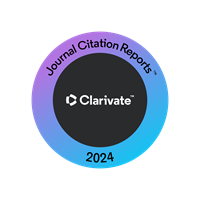<b>Reaction of corn genotypes to parasitism from <em>Meloidogyne incognita</em> breed 1 and <em>M. paranaensis</em></b> - DOI: 10.4025/actasciagron.v31i4.761
Keywords:
Zea may, nematode, resistance, genotype
Abstract
The use of corn hybrids and genotypes resistant to root-knot nematodes in crop rotation systems reduce the population of nematodes, preventing losses and allowing for the use of more susceptible genotypes. In this study, the resistance of eighteen hybrids of corn to parasitism of Meloidogyne paranaensis and M. incognita breed 1 were evaluated in a greenhouse. The plants were inoculated with 5,000 eggs and possible juveniles of each nematode in a completely randomized design, using ten replicates for each treatment with nematodes, and five replicates for the treatment without inoculation (control). The root staining technique using acid fuchsin was also applied, according to Byrd et al. (1972). Sixty days after the inoculation, the roots systems were collected, washed and evaluated for penetration, egg production and estimated reproduction factor (RF). The results showed that, for M. paranaensis, the RF varied from 0.01 to 0.08, while for M. incognita the variation was from 0.01 to 0.03, showing that all corn genotypes were resistant, presenting a RF < 1.Downloads
Download data is not yet available.
Published
2009-08-28
How to Cite
Levy, R. M., Homechin, M., Santiago, D. C., Cadioli, M. C., & Baida, F. C. (2009). <b>Reaction of corn genotypes to parasitism from <em>Meloidogyne incognita</em> breed 1 and <em>M. paranaensis</em></b> - DOI: 10.4025/actasciagron.v31i4.761. Acta Scientiarum. Agronomy, 31(4), 575-578. https://doi.org/10.4025/actasciagron.v31i4.761
Issue
Section
Crop Protection
DECLARATION OF ORIGINALITY AND COPYRIGHTS
I Declare that current article is original and has not been submitted for publication, in part or in whole, to any other national or international journal.
The copyrights belong exclusively to the authors. Published content is licensed under Creative Commons Attribution 4.0 (CC BY 4.0) guidelines, which allows sharing (copy and distribution of the material in any medium or format) and adaptation (remix, transform, and build upon the material) for any purpose, even commercially, under the terms of attribution.
2.0
2019CiteScore
60th percentile
Powered by 

2.0
2019CiteScore
60th percentile
Powered by 



















































